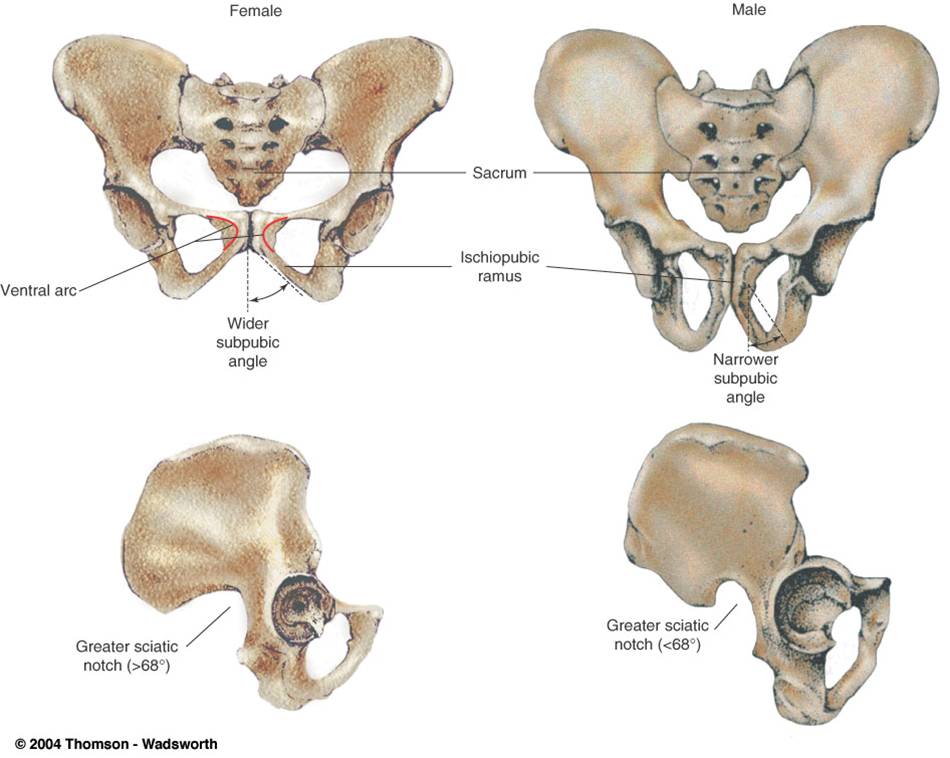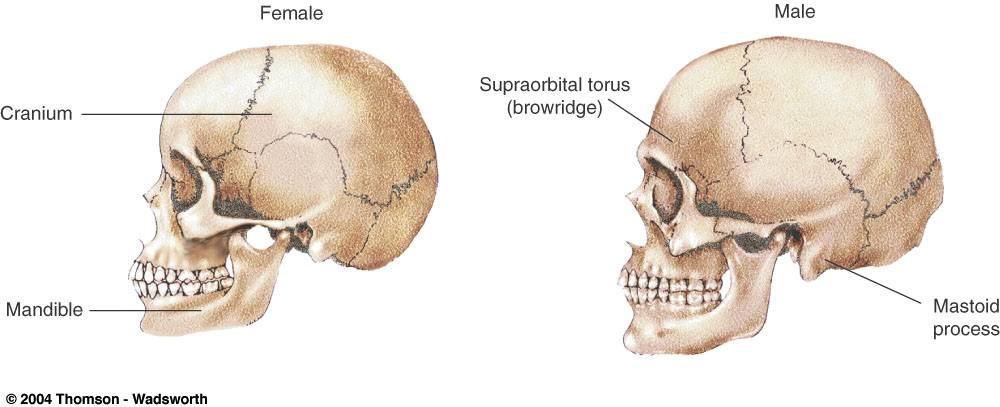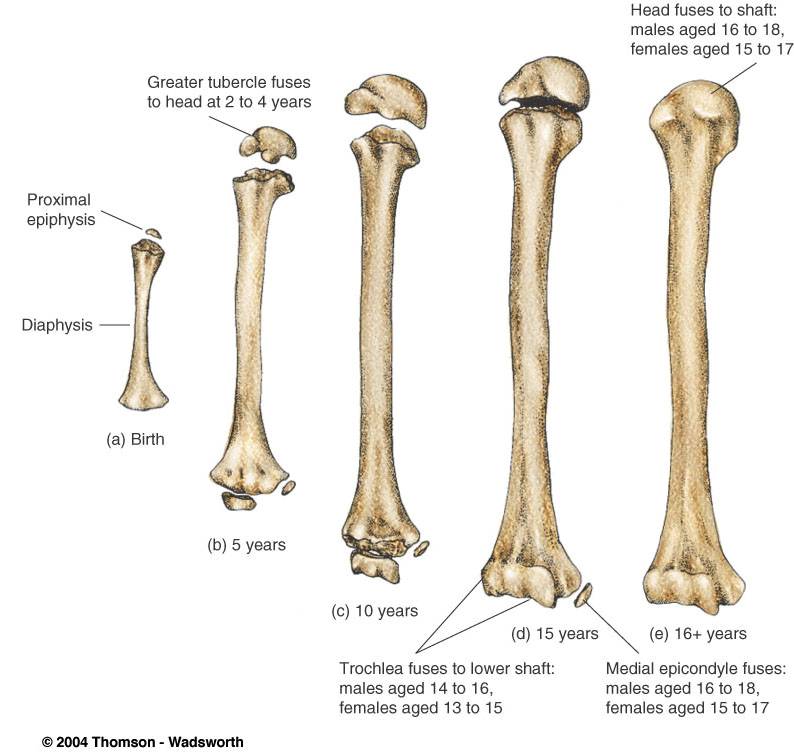

Introduction to Archaeology and Palaeoanthropology:
Humanity's Journeys
Dr. Kathryn Denning
Anth 2140, Sept 2005 - Apr 2006
24 Jan 2006... Hi!
Plan for the day
1 Course business/ announcements...
2 Interpreting the dead: bioarchaeology
3 The Great Diaspora
Quizzes
Regarding Quiz #3 (written in December, returned in the first tutorial in January): There was some ambiguity in my phrasing of the question regarding cold adaptations; i.e., there was room for legitimate differences in interpretations of the question. To offset the possibility that students lost marks because of this, we will simply add 3 marks (/40) to everyone's grade for that quiz.
The next quiz (#4 of 6) will be on February 1 in tutorial. Review guidelines will be posted here later today.
You might like to use the notes at the bottom of this page to review Chapter 7, since we didn't get to talk about it in lecture.
Reading and Assignments
Handout: Syllabus for Term 2. Additional online readings will be specified in lecture.
The Museum Assignment will be handed out in class on January 31st. It is due March 1st. N.B. February 7 and 8 there will be no lecture or tutorial, to help free up some time for you to go to the museum. You also have Reading Week off, of course (Feb 13-17). Start planning now to ensure you can go to the museum for several hours during the month of February. You are responsible for getting to the museum yourself. N.B. Admission is free on Fridays from 4:30 to 9:30.
Schedule
For last week, Jan 17: Bioarchaeology. Course Kit: review Atlas of Primate Skeletal Anatomy, and read Sexing and Aging the Skeleton, Whispers from the Ice, Kwaday dan Tsinchi.
Also quickly review Fagan 243-256.
For today, Jan 24, Fagan Ch 10, 257-283. The Great Diaspora, and Fagan Ch 11, 283-314. The Earliest Farmers
For next week, Jan 31: Fagan Ch 12, 315-344. The First Civilizations.
From tutorial two weeks ago... What can we really know about past people's lives? What can't we know?
Keep thinking critically about this question.
And from tutorial last week... Siberian Ice Maiden video discussion.
Taking off into World Prehistory
So... what are we?
A mammal. A primate. A fairly standard hominid with a bigger brain... and a great deal of culture, including elaborate social systems, complex mental worlds, a lot of "stuff", and complicated relationships with our environments.
Culture is the primary focus of prehistory. What are its forms? How does it change? Why?
Human beings are still biological creatures, and so archaeologists are still interested in the health and physical characteristics of different human populations. However, when studying human history since 18 000 years ago, archaeologists are less interested in the biological differences between people, since those differences tend to be very small (relatively speaking); we're much more interested in the cultural differences and similarities.
Archaeology and Prehistory
Archaeology - the study of (ancient) human behaviour based on surviving material finds. (aka "science of rubbish")
Archaeological record - every surviving material trace of past human behaviour, from artifacts to ecofacts to buildings to landscapes to bodies
Writing - has really only been used for the last 5000 years -- and written records are complex, i.e. not simple truth
Text-aided archaeology vs. Prehistoric archaeology n.b. "Prehistoric" is a touchy word -- we certainly don't mean it pejoratively.
Archaeology/Prehistory - a bit of a fuzzy line... but archaeology is what we do, and prehistory is the story we tell
Kinds of evidence we use to understand the human past -- archaeology, geological evidence, linguistic data, biological data, oral traditions, historical records... .and more!
The heart of archaeology
What has archaeology been about?
And at its best, what can archaeology be about?
A deeper understanding of ancient lives...humanity... life and and death.
How did people live? How did they die? What did the living do with the dead? And how did the dead influence the living?
To think about this, we need to remember that the living do interact with the dead. (That's what we're doing in archaeology in a way! asking them questions about their lives and getting answers... from their bodies, their belongings, their homes, their garbage, their neighbourhoods, cities, landscapes... and also from the things that they meant to be eloquent - writing, art, monuments)
We also need to remember that there is a difference between being biologically dead and being socially dead.
Here are a few different ways of treating the dead, known anthropologically/archaeologically.
- dead body to be avoided OR as something to be handled, talked about, joked about
- different treatment of body according to how the person died
- keep the dead away from the living, OR amongst the living
- the dead as a source of new life, OR as conveyors of more death
-the dead as something from which people (e.g. children) should be protected, OR not
-treat body as an individual OR as part of a collective
-treat the dead as socially inactive, OR as socially (and physically) still active and present
- conflation OR separation of physical death and social death
- funeral as mourning OR as celebration/counterpart to wedding
- the dead as allies, enemies, lovers, monsters, parents, children
-death as a discontinuity, OR as continuation of life in a slightly different location
- the dead as under the mercies of the living, OR the living as under the mercies of the dead
- memorials for the living OR for the dead
- the afterworld as a location of reward/punishment, OR as just another place to be
- death as final OR death as temporary
- death as threatening, OR death as just part of life
It's crucial to be sensitive towards different societies' attitudes towards, and feelings about, their dead. Archaeology hasn't always done this. Many academic disciplines have aspects to their history which are problematic; this is one of archaeology's problems.
It's crucial to try to keep the people in archaeology. It is possible to be very detached in archaeology and think only about the things that people made, or built... but we can't lose sight of the people themselves.
Bioarchaeology/ Skeletal Biology

STUDYING THE SKELETON - OVERVIEW
1st :
ETHICS (archaeological vs. forensic cases)
THINK: WHAT DO WE WANT TO KNOW? IS IT WORTH IT?
UNDERSTANDING BONE – LIVING, RESPONSIVE TISSUE
------
DEPOSITION (deliberate? accidental?)
DISCOVERY
RECOVERY (context!)
IS IT BONE? IS IT HUMAN?
IS IT RECENT OR ANCIENT? (How old?)
SEX (not gender)
AGE – INFANT, JUVENILE, SUBADULT, ADULT
PALAEOPATHOLOGY – DISEASE (INFECTIOUS, HEREDITARY, CONGENITAL), INJURY/TRAUMA
NUTRITION AND DIETARY CHOICES [malnutrition,
LIFESTYLE/BEHAVIOUR PATTERNS
PERSONAL IDENTITY (forensic, known historical cases)
CULTURAL MODIFICATION DURING LIFE (antemortem)
POSTMORTEM CULTURAL MODIFICATION (burial rites etc.)
POST-DEPOSITION (taphonomic processes)
GENERAL TYPES OF ANALYSIS
- morphological techniques (shape, wear & tear)
- metric techniques (size, ratios)
- radiography, microscopy, etc.
- biomolecular & chemical techniques, including DNA, isotope analysis
- dating techniques













Handout - shows diagram of ages at which epiphyses fuse.
This is what it looks like on an X-ray.
(a knee: distal femur, proximal fibula and tibia)

Wrist




Peruvian culturally modified skull shape

Bolivian
Modern head-shaping:
http://www.bhpoinc.com/orthotics_products_and_services.htm#Cranial%20Molding%20Helmet
NB Skeletal analysis can also be used on animals, as discussed earlier in the Fagan text.
Animal bones (zooarchaeology, faunal analysis to determine... wild or domesticated, hunted or farmed, when hunted and how)

IDENTIFICATION
the questions that need to be answered about a site's fauna include: domestic/wild proportions, proportions of different species represented -- this tells us a lot about subsistence (farming vs. hunting, what kind of hunting) which in turn has implications for social organization
we made it to here in class on Jan 24
For an individual set of remains:
GENERAL: medium-sized carnivore
SPECIES: dog
AGE: adult
Other relevant factors: health, context (how deposited? modification post-mortem?), fully domesticated or not?

DOMESTIC OX
- will have different features from the original wild species
- can establish species, age, health of individual, as well as butchering marks


RECONSTRUCTION OF BISON DRIVE/ BUFFALO JUMP
Head-Smashed-In, Alberta
- a very useful hunting technique
- the remains end up layered at the bottom of the gully, butchered
- knowing age of the younger animals can help tell time of year (1-month-old bison vs. 6-month-old bison)
- but how do we know this was a deliberate hunt rather than mass buffalo suicide, followed by human scavenging?
CHALLENGE:
Two thousand years after a site has been abandoned: How do you tell the difference between a bunch of animals killed all at once, and a bunch of animals killed one at a time over a period of several years?

Age profiles can help -- knowing the age of all the animals present.
Catastrophic Age Profile: This represents the death of an entire herd, or most of it -- thus a mass hunting technique, e.g. buffalo jump, canyon, swamp techniques
Attritional Age Profile: More young and old animals, fewer in their prime -- suggests that they were hunted one at a time, or scavenged
Summary notes for you to review from
Chapter 7 - Explaining the Past
CULTURE HISTORY, ANALOGY, OBSERVATION/EXPERIMENT, EXPLAINING CULTURAL CHANGE, CHANGE AND NO CHANGE
CULTURE HISTORY
- descriptive research methods
- a normative view of culture
Constructing Culture History
-identify research area, do survey
-excavate
-analyze
-synthesize
Synthesis
- careful chronology of site, and region
Hierarchy of Archaeological Units
- components, phases, regions, culture areas, horizons, traditions
Descriptive Models of Cultural Change
Inevitable Variation (small but cumulative changes)
Cultural Selection (for advantageous/adaptive traits)
Invention
Diffusion (small-scale.... Grafton Smith's ultradiffusion discredited)
Migration
ANALOGY
- "the past cannot be explained simply with reference to the present" (182) but the present sure does help
Direct historical analogy -- working backwards in time from known people to their ancestors -- historical records
Functionalism - working between cultural contexts, e.g. comparing objects of peoples of the Kalahari to those of the American Southwest
ARCHAEOLOGY BY OBSERVATION/EXPERIMENT
Ethnoarchaeology
- e.g. observing hunting strategies, butchering practices among contemporary peoples -- and seeing what's left behind when they're done -- to understand archaeological sites
Experimental Archaeology
- e.g. making and using replicas of artifacts, buildings, farming strategies e.g. Butser
EXPLAINING CULTURAL CHANGE
Why? -- different approaches to the question include:
Cultural Systems and Cultural Processes
- Binford advocating more explicit use of deductive reasoning, scientific method
Processual Archaeology
- general systems theory - interrelationship of all aspects of a cultural system with the ecosystem
- cultural ecology - full awareness of ancient environments
- multilinear cultural evolution - change on many different paths
People, not Systems
- post-processual archaeology - religious beliefs, symbolism, ideology, social organization, the agency of the individual, the roles of people in cultural change, and increased attention to the marginalized, dismissal of the notion of a single neutral past that can be known archaeologically
-cognitive archaeology - archaeology of mind
- complexity - how to measure it? centralization of control? access to resources? number of different interest groups in society?
CHANGE AND NO CHANGE
- stasis also requires explanation!